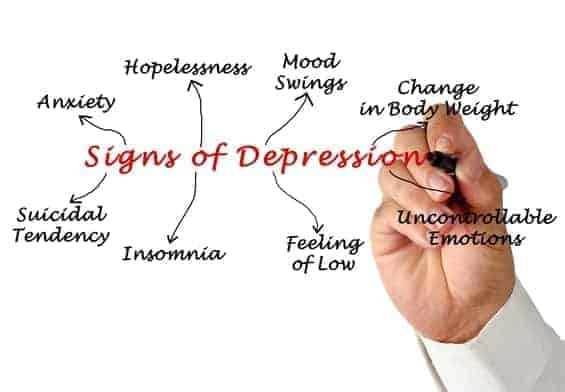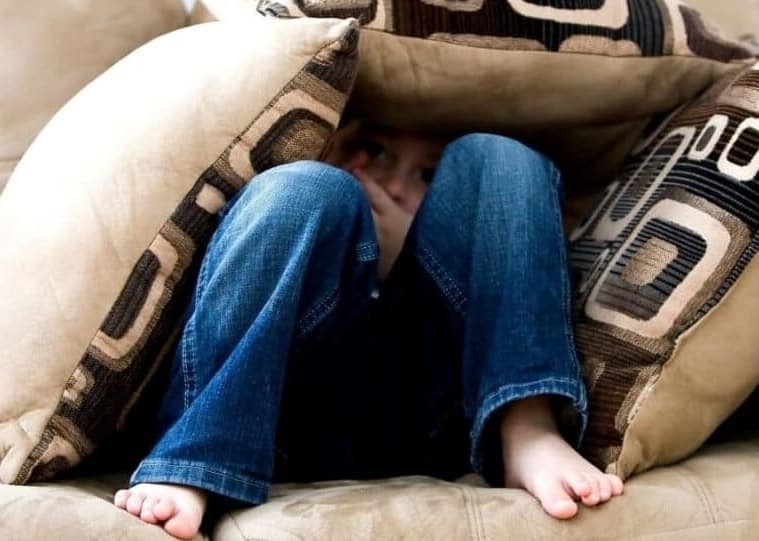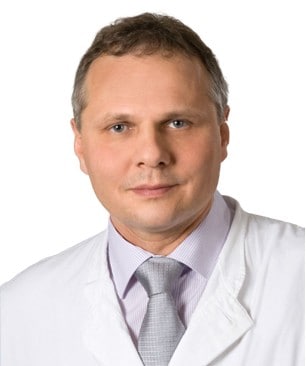Major Depressive Disorder (MDD). Introduction.

Very often people take for granted that they can naturally maintain good mental health. Sometimes they feel sad during certain periods of time. However, it is important to understand though when the symptoms cross the line into Major Depressive Disorder (MDD).
MDD is a pervasive and often misunderstood condition that can manifest with a wide range of symptoms.
Typically, Major Depressive Disorder starts relatively mildly. Initially, individuals may only complain of symptoms such as various physical complaints and a general decrease in performance.
Fully developed MDD is always associated with a profound sadness, sleep disturbances, loss of appetite, a pervasive sense of apathy, a loss of interest, or an inability to make and execute everyday decisions.
As a result, individual’s overall lifestyle and quality of life can be significantly impaired. MDD can persist for weeks, months, and even years, depending on the clinical picture and severity.
Categorizing Major Depressive Disorder
Medical specialists determine the severity based on well-defined parameters. Recognizing the various forms and degrees of depression is crucial for appropriate diagnosis and treatment. Tailoring interventions to the specific intensity, duration and type of the condition can greatly enhance the well-being and chance of full recovery.
Varying Levels of Intensity
MDD manifests in various forms and varying levels of intensity. Clinically, there are three distinct severity levels of depressive disorders: mild, moderate and severe depressive episodes.
Course of the Illness
Furthermore, doctors categorize depression and its extent based on the course of the illness. Thus, these conditions can be classified into three different timeframes:
- single depressive episode
- recurring depressive disorder
- long-lasting (chronic) depressive disorder
Criterion of Life Situation
In addition to the temporal course, different life situations must also be considered. An example is seasonal depressive disorder, which predominantly occurs in the autumn and winter months and is referred to as seasonal affective disorder.
Furthermore, depression often occurs in women immediately after childbirth, during the postpartum period, or during pregnancy. The suffering experienced by affected women is significantly high in these cases.
Major Depressive Disorder (MDD). Signs and Symptoms

Major Depressive Disorder, called also “major depression” has profound effect on people’s ability to function normally. Affected individuals feel “pressed down” in their mood and vitality not being able to master their daily routine.
Psychiatrists count depression to the category of “affective disorders” because it affects how you think and feel. Depression influences emotions and energy levels. Other associated symptoms are sleeplessness, underlying anxiety, sometimes even delusions. MDD frequently appears in phases, called episodes, which continue for weeks or months, sometimes for years.
The first step in recognizing the signs and symptoms of clinical depression is a detailed psychiatric investigation consisting of a patient interview and physical examination. Psychiatrists will recommend laboratory tests, and in more severe cases, an EEG and MRI to rule out underlying physical disorders. Your psychiatrist will prescribe the medication best suited for you and your condition. The best medication is medication that alleviates your symptoms and does not have side effects. The goal of psychiatric treatment of depression is to achieve a full recovery, which means that the depression is cured, and a relapse prevented.
Diagnostics of Major Depressive Disorder
A diagnosis of depression is based on the signs and symptoms developed by the patient. Typical symptoms are low mood, fatigue, loss of appetite and sleeplessness. In severe cases, patients suffer from loss of affect (feelings and emotions) and experience slowdown of thinking (brain fog). In such state, the patient is not able to feel happy or sad but feels “numb”.
DSM 5 Criteria of MDD

The current classification systems DSM 5 and ICD 10 , categorize depression based on the severity of the symptoms and codes them as mild, moderate, or severe. The phenomenological description based on description and quantification of symptoms do not tell us nothing about the underlying root causes.
The second key step in the diagnostic procedure is identifying the frequency of episodes (single or recurrent episodes) and the presence or absence of delusional symptoms.
- Depressed mood, most of the day, nearly every day, can be irritable mood
- Loss of interest/pleasure: markedly diminished interest/pleasure in all (or almost all) activities.
- Weight loss or gain: significant weight loss or gain or decrease or increase in appetite nearly every day.
- Insomnia or hypersomnia: nearly every day
- Psychomotor agitation or retardation: nearly every day
- Fatigue or loss of energy, nearly every day
- Feeling worthless or excessive/inappropriate guilt: nearly every day
- Decreased concentration: nearly every day
- Thoughts of death/suicide: recurrent thoughts of death or recurrent suicidal ideation
Additional required criteria: must have all 4, plus ≥5 depressive symptoms above and the symptoms cause clinically significant distress in social, occupational, or other important areas of functioning.
Social Impact of Major Depressive Disorder
Depression leads to mental and physical inhibition (mental block) that impairs a patient’s social and occupational functioning. In consequence, depressed people are often unable to carry out even the simplest daily activities. They cannot keep their apartment clean or maintain personal hygiene. Other symptoms include feelings of helplessness and social self-isolation. Patients with depression often experience decreased or complete lack of sexual interest (loss of libido) leading to problems in their marital life.
Sense of Guilt and Inferiority
The main themes of depression relate to the person’s ‘spiritual salvation’, material and health condition. The person might believe to be the greatest sinner (guilt delusion), or he might claim to be utterly poor despite his good financial situation (poverty delusion). Patients overestimate negative events. Pleasant experiences have no effect. Depressed people tend to feel guilty and inferior to others.
Social Withdrawal

A common symptom of MDD is social withdrawal with involuntarily and significantly reduced of regular social contacts.
Whether the lack of social interactions is externally imposed or stems from internal inhibitions is irrelevant. Initially avoiding situations like large gatherings can lead to a spiral towards complete social isolation. Thus, social avoidance can not only be a symptom of a depression but also can trigger it. For instance, there is a significantly higher prevalence of depressive symptoms among adolescents who reported having no close friends.
The approach to overcoming social isolation depends on the reasons behind its occurrence, which often involve a combination of factors. The lack of contacts can have far-reaching consequences. In many cases, psychotherapy is the preferred method to stop the vicious circle by addressing underlying emotional issues.
Social Stigma
When family and friends are not familiar with clinical depression, they might seriously underestimate what a depressed person is going through. Very often, a family member will think they are observing someone being lazy, angry and negative. Well-meant advice for a quick pick-me-up only makes depressed people feel worse, because simple remedies that work with sadness will not work for the patient. It is very important for us to understand that clinical depression is a condition that needs appropriate, professional attention and treatment.
Steps in Diagnosing Major Depressive Disorder (MDD)
Depression isn’t a disorder that you can treat on your own; it’s a serious condition triggered by multiple factors. Therefore, the condition must be diagnosed and treated by an experienced psychiatrists and follow standardized procedures. In consequence, the treatment of depression at CHMC adheres to the international standard following a number of steps.
Anamnesis
Anamnesis means a medical history review. The psychiatrist asks you about your personal and family medical history. The reason is to identify possible genetic or environmental factors causing the depression.
In the second step, your psychiatrist will assess the symptoms by asking for their quality, quantity, and duration. These symptoms may include persistent sadness, empty mood, loss of energy, fatigue, sleeplessness, and feelings of guilt.
Physical Exam
The psychiatric exam consists of general physical exam and neurological exam which are critical component of the evaluation process. The objective of the exams is the exclusion of physical illnesses, for example neurological problems on the central nervous system, which might be associated with depression.
Laboratory Test
Laboratory tests are necessary to detect possible health problems before starting treatment. They also serve as a benchmark for later controls to rule out the side effects of the prescribed medication.
Electrocardiogram (ECG)
Similarly, the ECG has the objective of excluding problems on your heart before commencing the treatment and creating a point of reference for the follow-up controls.
Psychological evaluation
Additionally, a psychological evaluation may be necessary in some cases to secure a diagnosis and gain further insight into your psychological status. This evaluation can involve the use of standardized interviews or psychometric tests.
Major Depressive Disorder. Conclusion
When people exhibit typical symptoms of Major Depressive Disorder, it is often dismissed as a temporary mood swing or passing sadness which can be battelled with the will power. However, MDD is a genuine illness and not a sign of a “personality weakness.”
Untreated MDD can have dire consequences affecting people’s overall quality of life. The depressive symptoms can persist for an unforeseeable period because major depressive disorder is a serious and, in many cases, long-lasting condition. In the worst cases, it can lead to suicide. Recognizing signs and understanding the nuances of Major Depressive Disorder early and seeking appropriate help is essential for effective diagnosis and treatment.
On average, only small percentage of affected individuals receives adequate treatment. These is alarming and clearly highlights that MDD is still underestimated.
Key Points
- The first step prior to treatment is the correct diagnosis distinguishing MDD from other mental disorders.
- Recognizing correctly depression is the “bottle neck” in the diagnostic and treatment process. Thus, only half of the depressive disorders are diagnosed properly.
- From those accurately diagnosed only half are treated. This means that only every fourth person suffering from depression receives treatment.
- Among the sufferers 10% -15% commit suicide.
- Men are three times more likely to commit suicide than women.
- A professional team consisting of a psychiatrist and psychologist can cure depression.
Famous People Diagnosed with Major Depressive Disorder:
- Abraham Lincoln
- Georgia O’Keeffe
- Theodore Roosevelt
- Robert Schumann
- Emily Dickinson
- Ludwig van Beethoven
- Edgar Allan Poe
- Marie Curie
- Mark Twain
- Vincent van Gogh
- Virginia Woolf
Read More about depression
The effects of loneliness and social isolation
How to treat depression?
What are antidepressants and how they work
What is the integrative treatment for depression?
Misdiagnosing depression with other psychiatric illnesses
What is post-partum depression?
Important facts about depression
What is dysthymia?
How to prevent depression?
What is causing depression?
History of depression
How to find if I’m depressed?

DR. GREGOR KOWAL
Senior Consultant in Psychiatry,
Psychotherapy And Family Medicine
(German Board)
Call +971 4 457 4240
